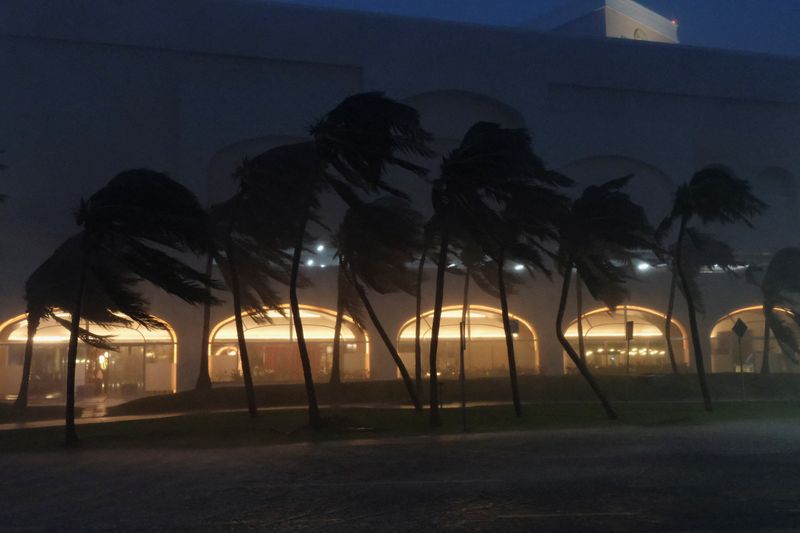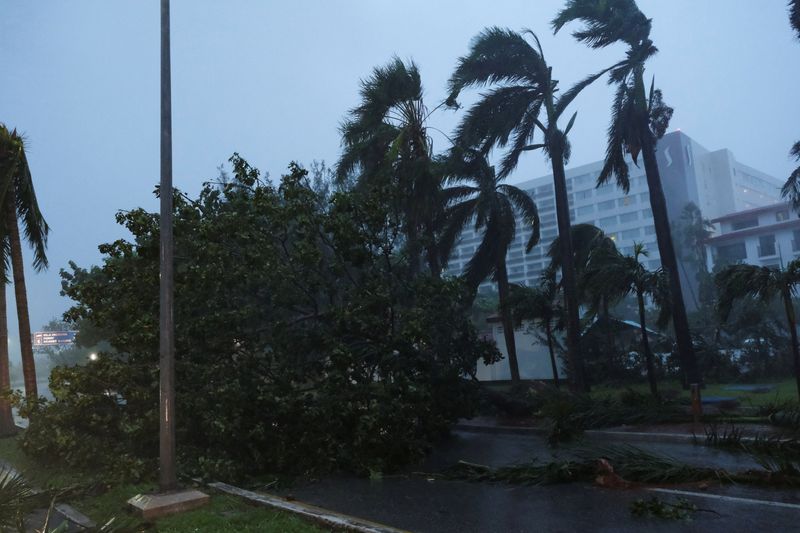
By Rich McKay, Brendan O’Brien and Andrew Hay
(Reuters) -Hurricane Helene is forecast to rapidly strengthen and could hit Florida on Thursday as a Category 4 storm, producing “catastrophic” winds of up to 156 miles per hour (251 km per hour), forecasters said.
Helene entered the Gulf of Mexico on Wednesday and was expected to pick up strength from the gulf’s warm waters before making an expected landfall in Florida’s panhandle on Thursday evening.
“For those in the path, that unfortunately means catastrophic wind impacts,” said National Hurricane Center Deputy Director Jamie Rhome of the forecast rise in strength to category 4 with sustained winds of 130 to 156 mph (209 to 251 kph).
Storm surge, the wall of seawater pushed on land by hurricane-force winds, was upgraded to 15 to 20 feet (4.6 to 6.1 meters) in the Big Bend area of Florida’s panhandle where the storm is expected to come ashore, Rhome said.
More than 40 million people in Florida, Georgia and Alabama were under hurricane and tropical storm warnings, the hurricane center said.
Numerous evacuations were ordered along Florida’s Gulf Coast, including Sarasota and Charlotte counties, and dozens of counties have announced school closures, including Hillsborough and Pinellas counties.
With weather reports playing on her television in the background, Melissa Wolcott-Martino, a retired magazine editor in St. Petersburg, was busy packing on Wednesday before evacuating her one-story coastal home and heading for higher ground.
Hours earlier, she had finally finished repairing the damage from last year’s Hurricane Idalia, which clobbered the low-lying area with powerful winds and devastating floodwaters.
“We had Idalia last year,” the 81-year-old said in a telephone interview. “We just finished the renovations, last touches today, and now we’re packing up for a new storm. This is not so great.”
Pinellas County officials ordered evacuations of long-term healthcare facilities, including nursing homes, assisted living centers and hospitals near the coast. The county sits on a peninsula surrounded by Tampa Bay and the Gulf of Mexico.
“Now, you still have time to prepare, review your hurricane plan, and make sure that you are executing your hurricane preparedness plan,” Governor Ron DeSantis said in a Tuesday press briefing.
Helene lashed Cuba with heavy rains overnight, dumping as much as 8 inches (20.3 cm) in 24 hours across parts of the western tobacco-growing province of Pinar del Rio, the provincial meteorological service said.
CATEGORY 4
Helene was expected to dump up to 15 inches (38.1 cm) of rain in some isolated spots after making landfall in Florida, causing considerable flash and urban flooding, the hurricane center said.
Rhome of the hurricane center said about half of lives lost in hurricanes typically came from flash flooding caused by torrential rain, often among people who drive into flooded roads and are swept away. He urged those in affected areas to use extreme caution.
Rhome added that the expected hurricane-force wind impact area stretched around 180 miles (290 km) north from the Florida panhandle to southern Georgia.
“You need to prepare for prolonged (energy) outages, those trees are going to come down in strong winds, block roads,” Rhome said.
Residents in the potential path are being told to prepare to be without power for up to a week, Florida emergency officials said in a briefing.
In southwestern Georgia, farmers were scrambling on Wednesday to save their cotton and pecan crops, said Pam Knox, an agriculture climatologist with the University of Georgia in Athens.

Farmers usually have weeks, not days, to bring crops in, Knox said on Wednesday.
“This is going to be a billion-dollar disaster,” said Knox.
This post is originally published on INVESTING.


